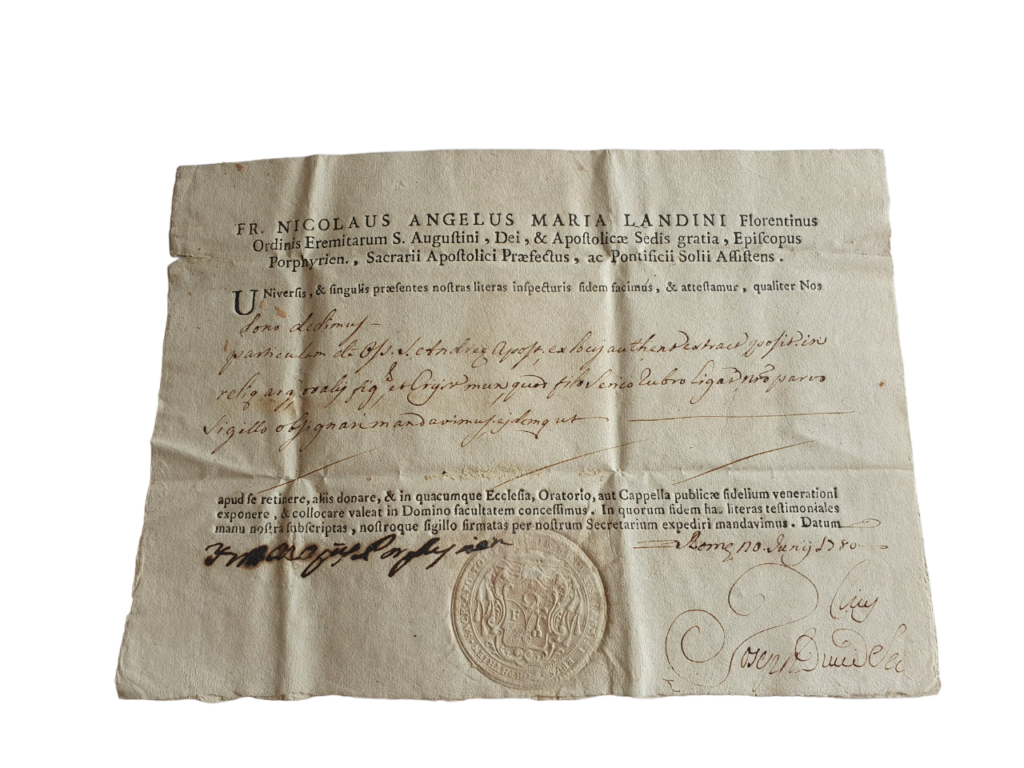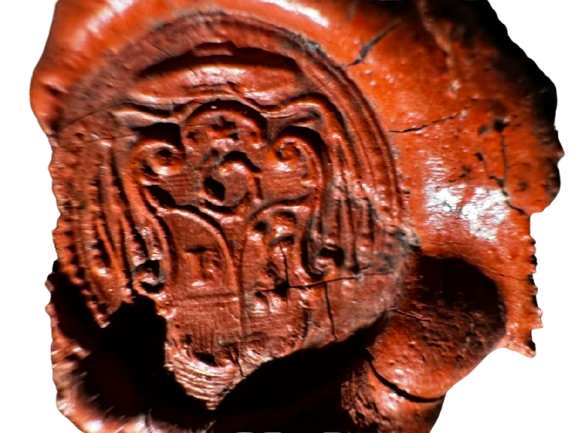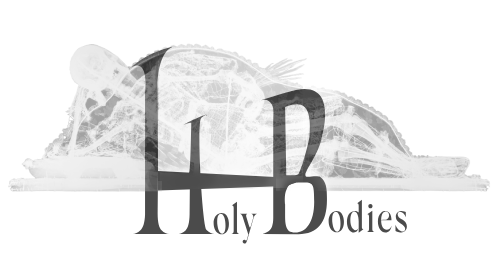St Primogénita
The simulacrum of St Primogénita lay on its right side, exhibiting a delicate state of conservation with the head lacking definition and the cranium fractured. The face was composed of several layers of gauze. Resting on a high pillow, the head was veiled in gauze and adorned with polychrome metal-leaf flowers. The hands were covered with metallic lace gloves, while the forearms, legs, and feet were wrapped in gauze featuring vegetal patterns. Strapped sandals embellished the feet, and a richly embroidered red tunic, adorned with gold threads and metal leaf, completed the striking ensemble.

The left arm (including the forearm and hand) was bent, holding a palm leaf made of green and gold-toned paper. The right arm was bent, with the forearm and hand positioned near the face, possibly serving as a resting support for the head. Pearl or bead bracelets adorned the right wrist.
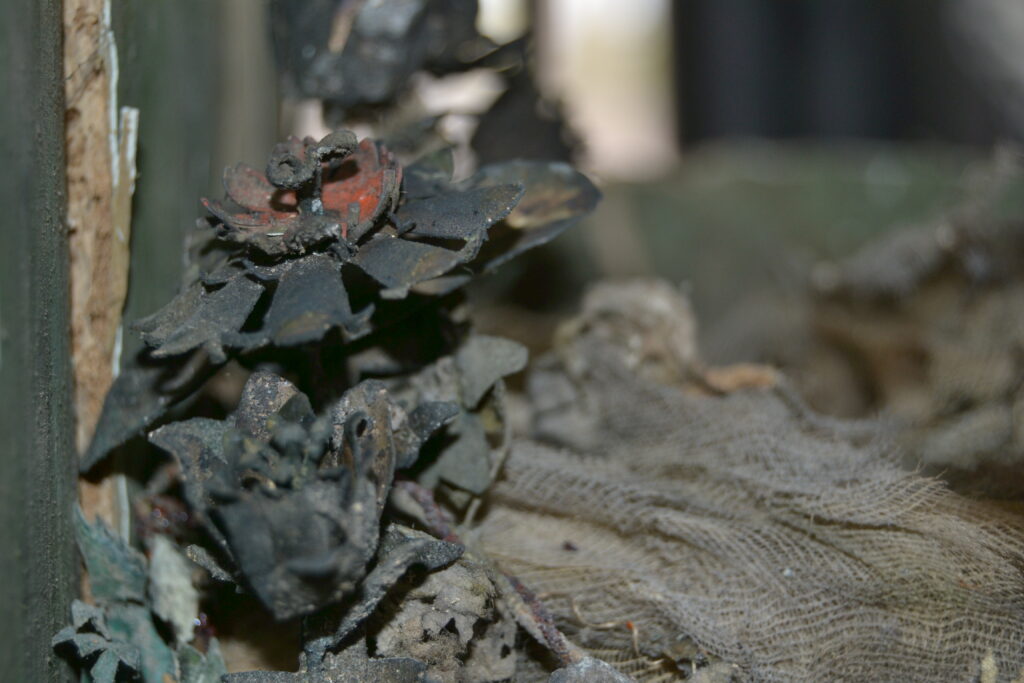
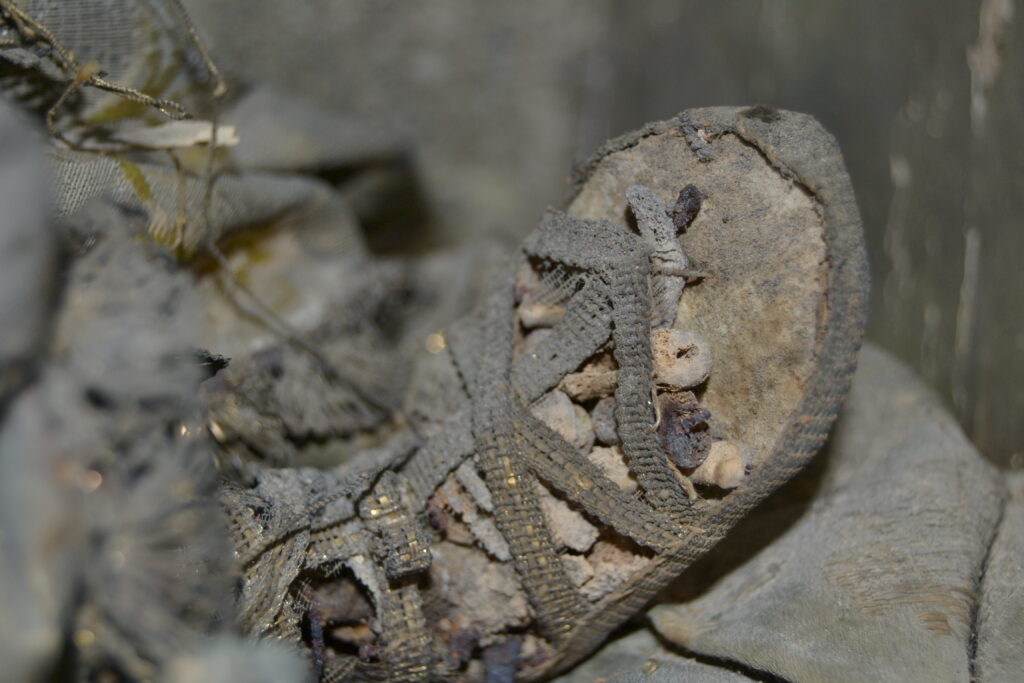
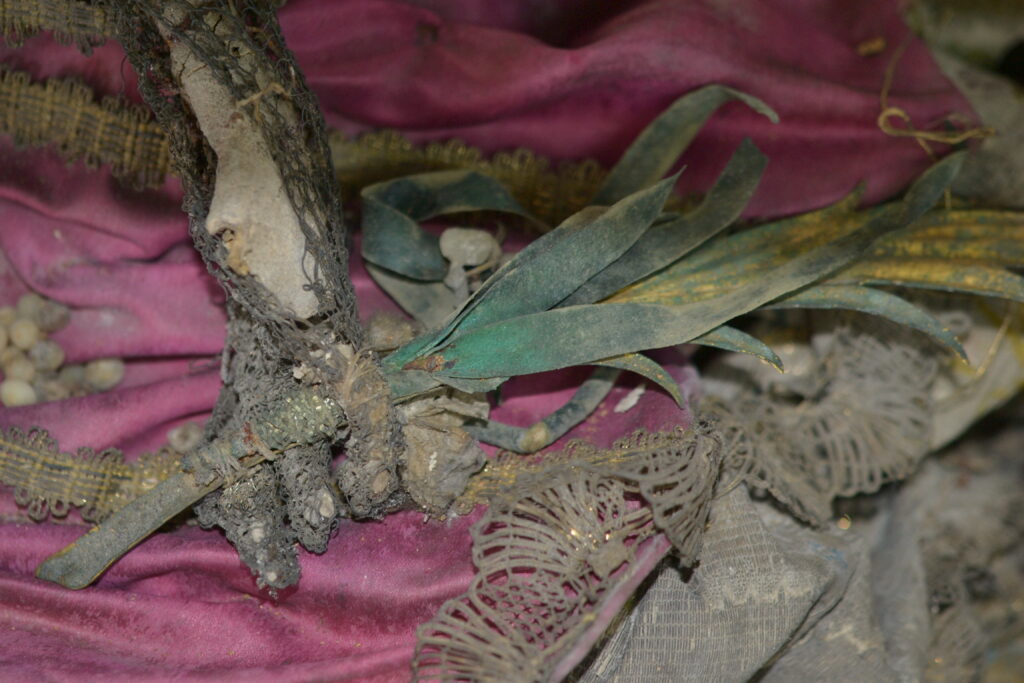
St Primogénita’s urn bore an important temporal marker: a red wax seal with an imprint of a coat of arms from the Bishop who authenticated the relic and authorised its transportation to Portugal.
